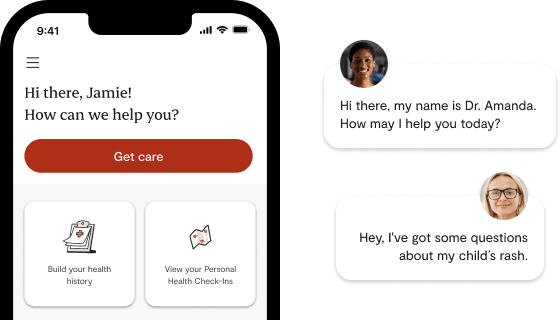Navigating Canada’s healthcare system can sometimes feel overwhelming. Deciding whether to visit your family doctor or head to a walk-in clinic depends on your unique needs, the urgency of your condition, and your preference for continuity versus convenience.
The Foundation of Primary Care
Primary care serves as the cornerstone of a robust healthcare system. It encompasses:
-
Preventive care (screenings, immunizations, lifestyle counseling)
-
Acute care (minor illnesses, injuries, infections)
-
Chronic disease management (diabetes, hypertension, mental health)
-
Coordination of specialist services
Ontario delivers primary care through two main models: family physicians and walk-in clinics. Understanding their differences empowers you to access the right care at the right time.
Continuity vs. Episodic Care
Family Doctor: Your Lifelong Health Partner
A family doctor provides continuous, comprehensive care over months, years, or decades. Key advantages include:
-
Personalized Medical History
Detailed knowledge of your genetics, lifestyle, past investigations, and family history allows for more accurate diagnoses and tailored treatment plans. -
Preventive & Chronic Care
Scheduled well-child visits, annual checkups, cancer screening (pap tests, FIT stool tests), immunizations, and management of complex conditions like chronic pain and diabetes. -
Coordinated Referrals
Seamless connections to specialists (e.g., dermatologists, cardiologists) with complete transfer of your medical records. -
Holistic Approach
Consideration of mental, social, and environmental factors influences treatment decisions.
Limitations: Appointment availability can be weeks out for non-urgent concerns, and office hours are typically weekdays only.
Walk-In Clinic: Immediate, Episodic Care
Walk-in clinics focus on urgent, short-term needs without appointments:
-
No Booking Required
First-come, first-served for minor illnesses and injuries, such as sprains, rashes, UTIs, minor burns, and sore throats. -
Extended Hours
Many clinics operate evenings and weekends, offering greater flexibility. -
Variable Provider Continuity
You may see different doctors or nurse practitioners each visit, limiting longitudinal knowledge of your medical history. -
Scope Focused on Acute Issues
Chronic disease management and complex cases are outside the typical scope.
Limitations: If capacity is reached, you may be turned away; follow-up may require another visit or referral to your family doctor.
Scope of Services Compared
| Service Category | Family Doctor | Walk-In Clinic |
|---|---|---|
| Appointments | Scheduled, same-day slots reserved for acute needs | Drop-in, first come, first served |
| Continuity | High—ongoing, long-term relationship | Low—different providers, no longitudinal record-sharing |
| Preventive Screenings | Routine (pap tests, blood pressure, lipid panels) | Limited or unavailable |
| Chronic Disease Management | Comprehensive (diabetes, hypertension, mental health) | Generally not provided |
| Acute Illness & Injury | Treated, but may require wait for scheduled visit | Primary focus |
| Referrals to Specialists | Streamlined, based on established networks | Possible but may lack direct specialist contacts |
| After-Hours Care | Limited; some family health teams offer shared coverage | Broad evening/weekend availability |
| Cost (OHIP-Covered) | Covered for insured patients | Covered; uninsured pay $50–$80 per visit |
-
Ongoing Health Concerns
For management of chronic diseases, mental health support, and complex care coordination. -
Preventive & Wellness Visits
Annual physicals, immunizations, and routine screenings to detect issues early. -
Holistic, Personalized Care
When you value a deep understanding of your medical history and lifestyle factors. -
Specialist Referrals
If you anticipate needing timely, well-coordinated referrals to dermatologists, endocrinologists, or other specialists.
When to Opt for a Walk-In Clinic
-
Acute Minor Illnesses
Immediate care for coughs, colds, minor infections, sprains, and skin conditions. -
After-Hours or Weekend Needs
When your doctor’s office is closed and you require prompt attention. -
Unregistered Patients
If you haven’t yet secured a family doctor or need care while away from home. -
Rapid, One-Time Visits
For travel vaccinations, minor prescription refills, or urgent contraception advice.
How Walk-In Clinics Enhance Accessibility
Walk-in clinics emerged to address the family doctor shortage. A 2023 national survey revealed that one in five Canadians lacks a regular primary care provider. Walk-in clinics bridge this gap by:
-
Providing Immediate Access
Easing pressure on emergency departments and reducing wait times for minor conditions. -
Offering Flexible Hours
Accommodating busy schedules with evening and weekend services. -
Serving Unattached Patients
Ensuring that those without a family doctor still receive essential care.
Continuity of Care: Why It Matters
Continuity is more than familiarity—it improves outcomes. Studies show that patients with ongoing primary care have:
-
Lower Hospitalization Rates
Due to proactive management of chronic diseases. -
Higher Patient Satisfaction
Through trust and effective communication. -
Better Preventive Uptake
Enhanced screening participation and immunization adherence.
Integrating Virtual Care: The Best of Both Worlds
Virtual care platforms—such as those featured on Ogaei’s blog—blend continuity with convenience:
-
OHIP-Covered Virtual Visits
Engage with your family physician by secure video or phone. -
On-Demand Consultations
Access urgent care for minor ailments without leaving home. -
Record Integration
Many platforms sync with your existing medical records, ensuring your provider has complete history.
For an example of virtual team-based care, read “Telemedicine for Seniors: A Lifeline for Accessible Care” on Ogaei.
5 Most Searched FAQs in Canada
1. How do I find and register with a family doctor in Ontario?
Use Health Care Connect to get matched with a family physician accepting new patients. You’ll need your health card and basic medical history.
2. Can I see my family doctor after hours?
Many family health teams offer shared after-hours clinics where you may see another physician in your network. Check with your practice for details.
3. Will my walk-in clinic visit be recorded in my family doctor’s chart?
Not automatically. You must inform your family doctor or request the clinic to send visit summaries to maintain accurate records.
4. Are virtual visits with my family doctor as effective as in-person visits?
For routine follow-ups, medication management, and mental health consultations, virtual visits are equally effective. In-person is recommended when a physical exam or diagnostic testing is needed.
5. What services do walk-in clinics typically provide?
Common services include treatment for colds, UTIs, minor injuries, basic diagnostic tests, immunizations, prescription refills, and contraceptive advice.
Conclusion
Choosing between a family doctor and a walk-in clinic hinges on your current health priorities: continuity, comprehensive care, and long-term preventive strategies versus immediate access, flexible hours, and no appointment necessary. By understanding these models and leveraging virtual care solutions, you can optimize your healthcare journey in Ontario. Explore the Ogaei Virtual Care Blog for further guidance on telemedicine innovations, family practice enhancements, and expert health insights.








